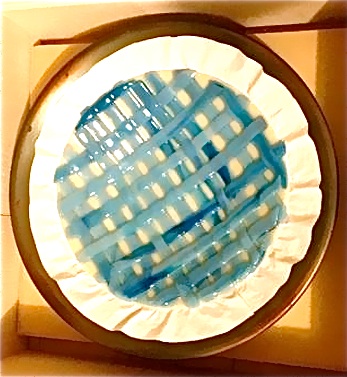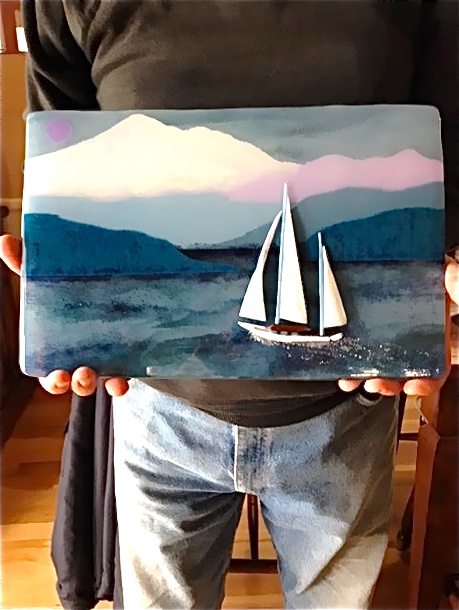Glass Fusing Experience
After retiring from a time consuming job, I found myself with time to explore other facets of life.
Round Top and Fayetteville inspires people to focus on art. Art has never been on my bucket list because I do not have one. The inspiration and the opportunities to learn more about techniques in art came together for me in 2014. An art class, painting with acrylics by Master Ken Muenzenmayer, and a pastel class at ARTS in Fayetteville taught me the basics of both media. For now, these techniques have not been further developed.
I also finished writing a book, The Union between Hendrik Bergen and Johanna Boere, and the histories of their families. After the passing of both of our parents, the family realized how little we knew about them, their parents and further back. With the help of many resources and our recollections, digging deep into our memories, the book has at least the basic information to answer most questions our children and grandchildren never thought of asking. The history on my father’s side starts in 1792 and my mother’s side in 1761, and old pictures and documents enhance the text. Hopefully our family, three families and nine grandkids, will continue recording their lives.

I shared the class with four female students; all had been taking classes from Donna before, and at least two of them are selling fused glass artwork. We started working on a bay view with a sailboat, a scene Donna had photographed somewhere, I believe between Seattle and Vancouver. We had to saw four different mountain formations, all from different colored glass and stack them on the base plate; in front, two islands were created and a moon is visible over the snowcap. With glass powder we created depth on the snowcapped mountain, trees on the islands and waves in the water. Adding frit, the piece was ready for the oven. Although most ovens are now computerized, one still needs to know the firing schedule for, in this case, 5 layers of glass with frit on top and the schedule for them to cool down. I was told that the science of the oven cannot be learned in one class, only over time with a lot of mishaps, like bubbles and breaking. During this 27 hour process, we worked on the sailboat pieces; the hull, the cabin, three sails and the stern. We had to do all of this twice so we could select the best pieces after firing.
When the large piece came out of the oven, I was elated but realized I could have done this a bit better or some other element a little different; but all in all, it was very uplifting. Naturally all that glass on top of each other had spread a little, and we were told to saw the bottom and two sides square! I did not see the need, risking my beautiful piece, but did it anyway. I was there to learn! When the sawing was done, I had to admit, it looked even better.
Now we had to assemble the sailboat. At the last minute Donna mentioned an idea for the masts. This created a challenge because now we had to adjust the sails since the masts would be partly under the sails. Then we discussed the position of the sailboat. I liked the boat steering from the right towards between the islands. Then I learned about composition, and the boat was placed where it is now making it a picture one sees whole and without greater emphasis on the sailboat or the background. Fortunately the boat stayed in place during firing, and I am very proud of the result.

What is next? Developing my techniques in acrylic, pastels or glass? I am hooked on glass, but one needs a lot of equipment, glass inventory and advice.

enough





